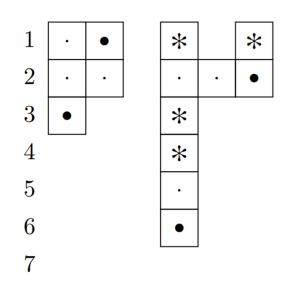Presented By: Combinatorics Seminar - Department of Mathematics
Combinatorics Seminar -- Top layers of Grothendieck and Lascoux polynomials
Tianyi Yu (UCSD)

The Schubert polynomials of the Symmetric group of n form a basis of the vector space they span. This space is well-studied with a dimension of n! and its Hilbert series being the q-analogue of n!. Key polynomials, which are characters of the Demazure modules, also form a basis for this space along with Schubert polynomials. Schubert and key polynomials are the ``bottom layers’’ of Grothendieck and Lascoux polynomials, respectively, which are two inhomogeneous polynomials. In this talk, we will focus on the space spanned by their ``top layers’’. We construct two bases using the top layer of Grothendieck and the top layer of Lascoux. We will also introduce a diagrammatic method to compute the degrees of these polynomials, involving drawing dark clouds and snowflakes. Finally, we will describe the Hilbert series of this space using a classical q-analogue of the Bell numbers.